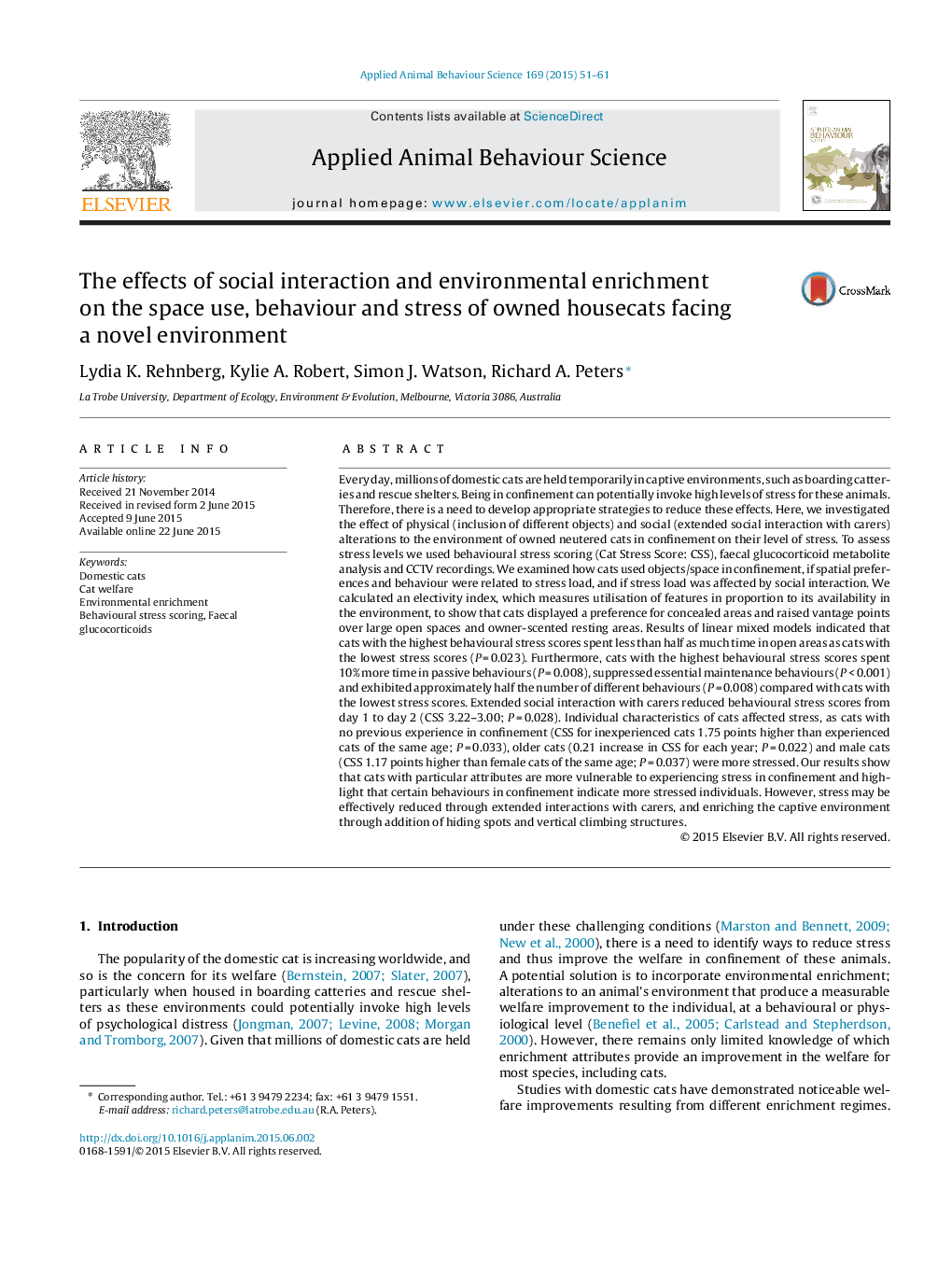| Article ID | Journal | Published Year | Pages | File Type |
|---|---|---|---|---|
| 4522468 | Applied Animal Behaviour Science | 2015 | 11 Pages |
•Owned housecats can experience high levels of stress in shelter environments.•Cats with high stress scores spent significantly more time in concealed areas.•Stress scores were related to age, sex and previous experience of confinement.•Stressed individuals exhibited lower diversity of behaviours.•Extended interactions with carers can reduce stress.
Every day, millions of domestic cats are held temporarily in captive environments, such as boarding catteries and rescue shelters. Being in confinement can potentially invoke high levels of stress for these animals. Therefore, there is a need to develop appropriate strategies to reduce these effects. Here, we investigated the effect of physical (inclusion of different objects) and social (extended social interaction with carers) alterations to the environment of owned neutered cats in confinement on their level of stress. To assess stress levels we used behavioural stress scoring (Cat Stress Score: CSS), faecal glucocorticoid metabolite analysis and CCTV recordings. We examined how cats used objects/space in confinement, if spatial preferences and behaviour were related to stress load, and if stress load was affected by social interaction. We calculated an electivity index, which measures utilisation of features in proportion to its availability in the environment, to show that cats displayed a preference for concealed areas and raised vantage points over large open spaces and owner-scented resting areas. Results of linear mixed models indicated that cats with the highest behavioural stress scores spent less than half as much time in open areas as cats with the lowest stress scores (P = 0.023). Furthermore, cats with the highest behavioural stress scores spent 10% more time in passive behaviours (P = 0.008), suppressed essential maintenance behaviours (P < 0.001) and exhibited approximately half the number of different behaviours (P = 0.008) compared with cats with the lowest stress scores. Extended social interaction with carers reduced behavioural stress scores from day 1 to day 2 (CSS 3.22–3.00; P = 0.028). Individual characteristics of cats affected stress, as cats with no previous experience in confinement (CSS for inexperienced cats 1.75 points higher than experienced cats of the same age; P = 0.033), older cats (0.21 increase in CSS for each year; P = 0.022) and male cats (CSS 1.17 points higher than female cats of the same age; P = 0.037) were more stressed. Our results show that cats with particular attributes are more vulnerable to experiencing stress in confinement and highlight that certain behaviours in confinement indicate more stressed individuals. However, stress may be effectively reduced through extended interactions with carers, and enriching the captive environment through addition of hiding spots and vertical climbing structures.
